How to Avoid Snakes While Hiking? I know that encountering a snake on the trail can be a frightening experience. While snakes are an important part of the ecosystem, it’s understandable to want to avoid them while out on a hike. Fortunately, with a bit of knowledge and preparation, it’s possible to minimize your chances of encountering a snake on the trail.
One of the most important things you can do to avoid snakes while hiking is to stay on designated trails. Snakes tend to prefer areas with tall grass or rock piles, so sticking to the trail can help you avoid these potential hiding spots. Additionally, wearing long pants and boots can help protect your legs and feet from potential snake bites.
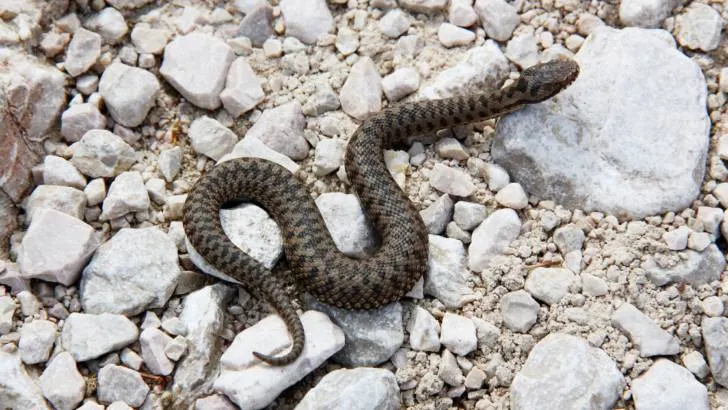
Making noise while you hike can also be helpful, as it alerts snakes to your presence and gives them time to move away. Finally, carrying a hiking stick or trekking poles can help you navigate difficult terrain and potentially scare off any snakes in the area.
Key Takeaways
- Staying on designated trails and avoiding tall grass or rock piles can help minimize your chances of encountering a snake while hiking.
- Wearing long pants and boots, making noise while you hike, and carrying a hiking stick or trekking poles can also be helpful in avoiding snakes.
- Remember that snakes are an important part of the ecosystem and should be respected, even if they are scary to encounter on the trail.
How To Avoid Snakes While Hiking
Hiking is a great way to enjoy the outdoors, but it also means encountering wildlife, including snakes. While most snakes are harmless, it’s important to know how to avoid them to prevent a potential encounter. Here are some tips on how to avoid snakes while hiking:
Be Aware Of Your Surroundings
The first step to avoiding snakes while hiking is to be aware of your surroundings. Keep an eye out for any signs of snakes such as holes, rocks, or logs. Snakes are often found near water, so be extra cautious when hiking near streams or ponds. Look out for any movement or rustling in the bushes or leaves.
Embarking on a snake-safe hiking journey entails a fundamental commitment: prioritizing your environment. The very first stride in steering clear of snakes during your hikes involves fostering an unwavering awareness of your surroundings. Sharpen your senses to detect even the subtlest signs of snake presence. This means keeping a vigilant lookout for telltale indicators like hollows, rocks that might double as hiding spots, or logs concealing serpentine guests.

Watersides can be snake hotspots, so grant an extra layer of caution when your trail leads alongside streams or tranquil ponds. Train your gaze to discern any stirrings of movement, however delicate, within the undergrowth or amid the fall of leaves. By immersing yourself in this heightened state of environmental mindfulness, you’re arming yourself with the ultimate tool against unexpected encounters with these reptilian inhabitants.
Wear Appropriate Clothing
Wearing the appropriate clothing can help protect you from snakes. Wear long pants and high boots to cover your ankles. Avoid wearing shorts or sandals. Brightly colored clothing can also help you spot snakes from a distance.
Crafting a strategic defense against snakes begins with your choice of attire. Your shield, in this case, isn’t just fabric—it’s the appropriate clothing. Embrace the wisdom of safeguarding yourself from potential snake encounters by outfitting yourself in a manner that leaves no room for vulnerability. Wrap your lower limbs in the security of long pants, a foundational layer of protection that encompasses your ankles. Elevate your safeguarding further by donning high boots, those steadfast guards that stand sentinel over your feet and lower legs. Sidestep the allure of shorts or sandals, for they expose you to the very elements you’re seeking to avoid. In this dance of precaution, your attire becomes your armor.
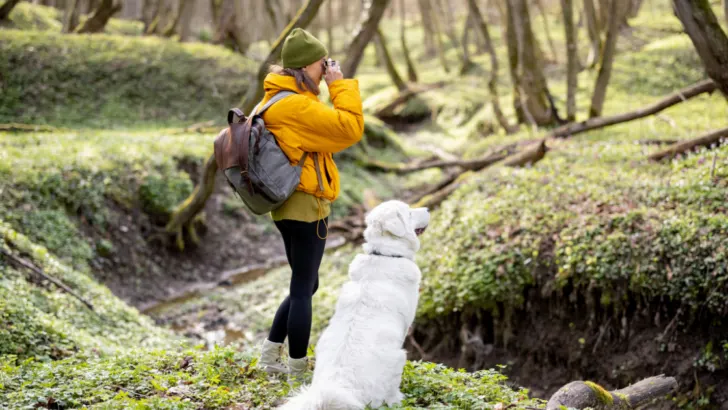
But that’s not all—here’s where the artistry of choice comes into play. Consider the canvas of your clothing as an opportunity to enhance your defenses. Opt for hues that pop—bright and eye-catching colors that create an advantage. This isn’t just about aesthetics; it’s about practicality. The brilliance of your attire serves a dual purpose: it keeps you visible and serves as a beacon of early warning. Snakes won’t find it easy to evade your discerning gaze when your clothing acts as a spotlight against the backdrop of nature. As you step onto the trails draped in this calculated combination of apparel, remember that you’re not just dressing for comfort or style—you’re suiting up for safety.
Make Noise
Snakes are often shy and will avoid humans if they hear them coming. Make noise as you hike by talking, singing, or clapping your hands. This will alert snakes to your presence and give them time to move away.
In the symphony of the wild, understanding the nuances of communication can become your secret key to harmonious coexistence with snakes. These often-elusive creatures are inherently timid, wired to retreat at the first hint of human presence. It’s a delicate balance where sound becomes your ally. Imagine yourself as the conductor of a trailside orchestra, guiding your way through the wilderness by orchestrating a conversation of sound waves.
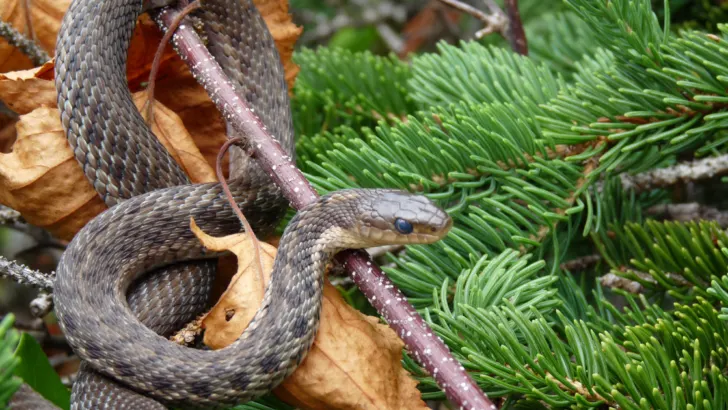
Every step you take echoes through the surroundings, a sonic footprint that precedes you. To snake-proof your path, make yourself heard. Engage in a vocal dance with nature—speak, sing, let the cadence of your voice fill the air. As the notes of your melody flow, they act as messengers, announcing your arrival to the intricate ecosystem that surrounds you. Applaud your steps by clapping your hands, a cheerful ovation that resonates across the landscape. This is not noise for its own sake; it’s a symphony of awareness.
Picture the scene: the rustling leaves, the gentle susurrus of wind, and your voice weaving seamlessly into the tapestry. With each sound, you extend an invitation to snakes, a courteous notification that you’re sharing their space. They, in turn, embark on their graceful retreat, a retreat that speaks of respect and equilibrium. In this dance of echoes and responses, you unveil the art of understanding the unspoken agreements that govern the trails. Through sound, you forge a bond of serenity—a bond that whispers, “We are both wanderers here, seeking our own paths, and we’ll pass with mutual respect.
Stick To Well-Traveled Trails
Stick to well-traveled trails as snakes are less likely to be found in areas with high human traffic. Avoid hiking through tall grass, brush, or rocky areas where snakes may be hiding.
Embarking on a journey through the great outdoors is akin to navigating a map of choices, and one of the most pivotal choices you make is the path you tread. Like a seasoned wayfarer, your foremost strategy for navigating snake-prone areas is to align your steps with well-traveled trails. Here, the rhythm of human activity works in your favor, for snakes tend to shy away from areas abuzz with bustling explorers. In this tale of trails, your safest routes are those etched by many before you.
The secret, you see, lies in the heartbeat of these paths. They are woven into the fabric of familiarity, imprinted with the echoes of hikers past and present. In these well-trodden corridors, the harmony of human presence transforms the landscape. Snakes, by their very nature, opt for the quieter alcoves, the spaces untouched by constant footfalls.
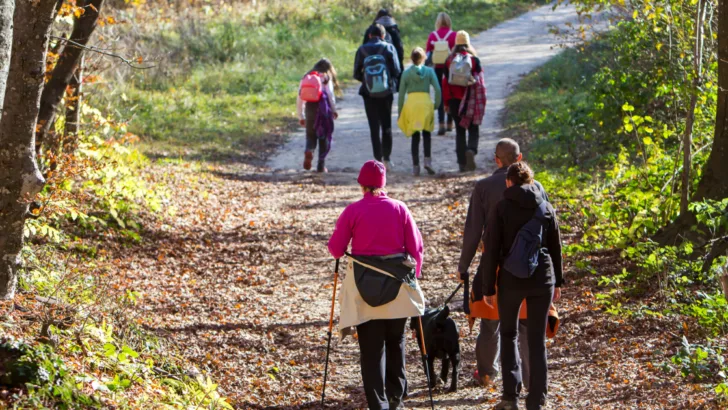
However, should you feel the allure of untamed territories beckoning, pause and heed a word of wisdom: exercise caution. Be the discerning trailblazer who knows when to refrain. Tall grasses, those verdant seas that sway like waves, harbor a concealed world where serpents may lie in wait. Brushy thickets and craggy rocks also whisper of hidden dangers. Here, you traverse at your own risk, venturing into the heart of their domain.
Yet, remember, every adventurer’s journey is uniquely their own. While caution remains your compass, so does the thrill of discovery. Strike the balance that speaks to you, make informed choices, and embark on your chosen trail with wisdom as your guide. It’s the dance between embracing the familiar and forging a new narrative—a dance that encapsulates both reverence and exploration.
Check Your Gear
Before you start hiking, check your gear for any snakes that may have taken shelter in your backpack or shoes. Shake out your gear and inspect it before putting it on.
In the prelude to your hiking escapade, a ritual of vigilance awaits—one that centers around your gear, the stalwart companions of your journey. As you embark, the essence of readiness lies in your thoroughness, an act of mindful preparation that leaves no stone unturned, no fold untouched. This gear inspection, like an ancient rite, is your armor against uninvited co-travelers of the slithering kind.
Before you set foot on the trail, consider this a sacred moment of communion with your equipment. Traverse the landscape of your backpack, peering into every crevice, every pouch. There, amidst the compartments that hold your essentials, you may discover an interloper—a snake, perhaps seeking refuge in the embrace of your belongings. Your shoes, too, are potential hideaways, inviting clandestine occupants.
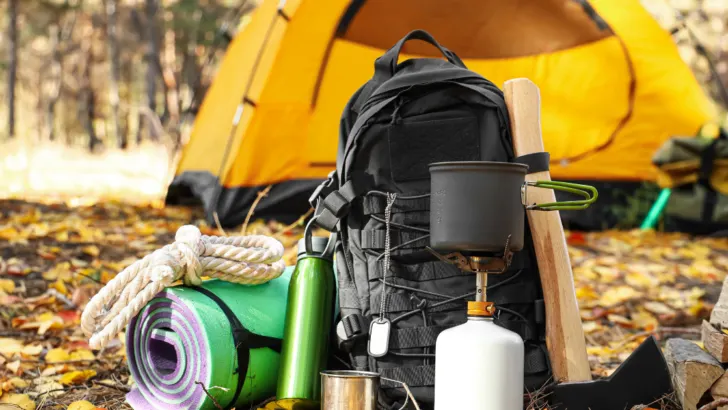
Now, the method unfolds. It’s a dance of caution, a choreography of care. With a brisk flourish, shake out your gear—a gentle reminder to the unseen guests that this is not their sanctuary. Observe the tumble of your belongings as they journey through the air, each tumble is a testament to your unwavering preparedness. Then, as the cascade subsides, the inspection begins—a meticulous survey of the emptied spaces.
Inspect with your eyes and your hands, weaving a narrative of safety and certainty. No corner should remain unexplored, no fold overlooked. When the inspection concludes, you adorn your gear with renewed confidence, a warrior prepared for the path ahead.
Remember, this is more than a ritual; it’s a dialogue with the wild, a proclamation of your presence. As you secure your gear and embrace the trail, your steps are emboldened by the knowledge that you’ve honored the pact—your gear, your space, and the wilderness entwined in harmonious coexistence.
What To Do If You See A Snake
If you see a snake while hiking, keep your distance. Do not try to approach it or pick it up. Slowly back away and give it plenty of space to move away on its own. Snakes will usually avoid human contact, but if you do get bitten, seek medical attention immediately.
In the labyrinth of your hiking venture, encounters with the inhabitants of the wild can be both awe-inspiring and humbling. Among these inhabitants, the serpent silently claims its space—a creature to be observed but never underestimated. Your response, when the paths of humans and snakes intertwine, must be swift and decisive, a choreography of respect and self-preservation.
If fate ushers you into the presence of a snake, a sacred rule governs your behavior: distance is your ally. Hold back the impulse to draw near, to reach out, to tame the untameable. Instead, remain still, a sentinel in the tapestry of nature. The art lies in patience, in granting the snake its rightful dominion.

Like a whisper in the wind, the call to retreat resounds—a measured step backward. Create a space of reverence, a canvas of separation between you and the enigmatic creature. This space is an unspoken agreement, a boundary that asserts your respect and acknowledges its autonomy. Snakes, by their very nature, seek the shelter of solitude, a dance with the wind and leaves. By granting them this dance floor, you preserve the sanctity of the moment.
Now, listen closely to the rhythm of your instincts, to the pulse that throbs within you. If, despite your vigilance, you find yourself enmeshed in the clutches of a snakebite, time is of the essence. Act, don’t hesitate—summon medical aid with urgency. Swift intervention can be your lifeline, a thread that weaves your narrative of survival. Remember, the wilderness sings its own hymns, and as you navigate its verses, respect, distance, and action will guide your dance with its enigmatic inhabitants.
By following these tips, you can avoid snakes while hiking and enjoy a safe and worry-free outdoor adventure.
Additional Considerations
When hiking in areas where snakes are common, there are a few additional considerations that can help you stay safe and avoid unwanted encounters.
The Type Of Snake You Are Likely To Encounter
It’s important to know what types of snakes are common in the area you will be hiking. This can help you identify them if you do come across one and take the appropriate precautions. For example, in North America, rattlesnakes are common in many areas, while copperheads are more common in the eastern United States.
If you are unsure what type of snake you are looking at, it’s best to give it plenty of space and avoid getting too close. Remember that most snakes are not aggressive and will only attack if they feel threatened.
If You Are Hiking With Children
If you are hiking with children, it’s important to take extra precautions to keep them safe. Make sure they stay on the trail and avoid wandering off into tall grass or rocky areas where snakes may be hiding.
Teach children to be aware of their surroundings and to look out for snakes. Encourage them to make noise while hiking to alert snakes to their presence and give them time to move away.
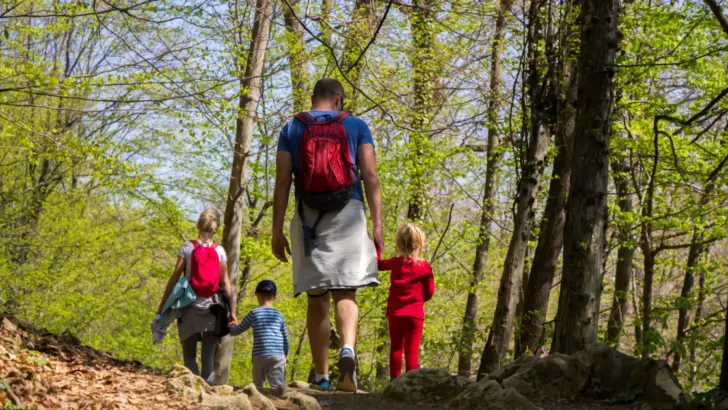
It’s also a good idea to carry a first aid kit with you that includes supplies for treating snake bites, just in case. If a child is bitten by a snake, seek medical attention immediately.
Remember, the best way to avoid snake encounters while hiking is to stay on designated trails, make noise while hiking, and be aware of your surroundings. By taking these simple precautions, you can enjoy the great outdoors with confidence and stay safe from snakes.
Conclusion
In conclusion, hiking is a great way to explore the outdoors and enjoy nature. However, encountering snakes on the trail can be a scary experience. By following the tips and guidelines outlined in this article, you can reduce the risk of encountering snakes and increase your safety while hiking.
One of the most important things to remember is to stay alert and aware of your surroundings. Look out for signs of snake activity, such as shed skin or tracks, and avoid hiking in areas where snakes are known to be active.
Carrying a walking stick can also be helpful, as it can be used to probe areas ahead of you while hiking to avoid accidentally stepping on hidden snakes. Hiking with a companion can also provide an extra set of eyes and ears to spot snakes and ensure safety.
It’s also important to wear appropriate clothing and footwear, such as long pants and boots, to protect yourself from snake bites. And if you do encounter a snake, remember to give it plenty of space and avoid provoking it.
By following these simple tips and staying informed about snake safety, you can enjoy a safe and worry-free hiking experience.
Resources
Frequently Asked Questions
How can I stay safe from snakes while hiking?
To stay safe from snakes while hiking, it’s important to stay on designated trails and avoid tall grass or rock piles where snakes may be hiding. Wearing long pants and boots can also help protect you from snake bites. Make noise while you hike to alert snakes to your presence and give them time to move away, and carry a hiking stick or trekking poles to help you navigate difficult terrain.
What are some natural ways to repel snakes while hiking?
There are several natural ways to repel snakes while hiking, including using essential oils like peppermint, cinnamon, and clove, which snakes find unpleasant. You can also try using mothballs or a mixture of vinegar and water to deter snakes.
What should I do if I encounter a snake while hiking?
If you encounter a snake while hiking, it’s important to remain calm and give the snake plenty of space. Back away slowly and avoid making sudden movements or loud noises. If the snake is blocking your path, try to find an alternate route.
Are there any tools or equipment that can help protect me from snakes while hiking?
There are several tools and pieces of equipment that can help protect you from snakes while hiking, including snake gaiters, which are designed to fit over your boots and lower legs to protect against snake bites. You can also carry a snake hook or tongs to move snakes out of your path.
What are the most common times and places to encounter snakes while hiking?
Snakes are most active during the warmer months and are often found in areas with tall grass or rocks. They may also be found near water sources like streams or lakes. It’s important to be especially cautious during early morning and late afternoon when snakes are most active.
What should I do in case of a snake bite while hiking?
In case of a snake bite, while hiking, it’s important to seek medical attention immediately. Try to remain calm and keep the affected limb immobilized and at or below heart level. Do not try to suck out the venom or apply a tourniquet, as these methods can do more harm than good.
